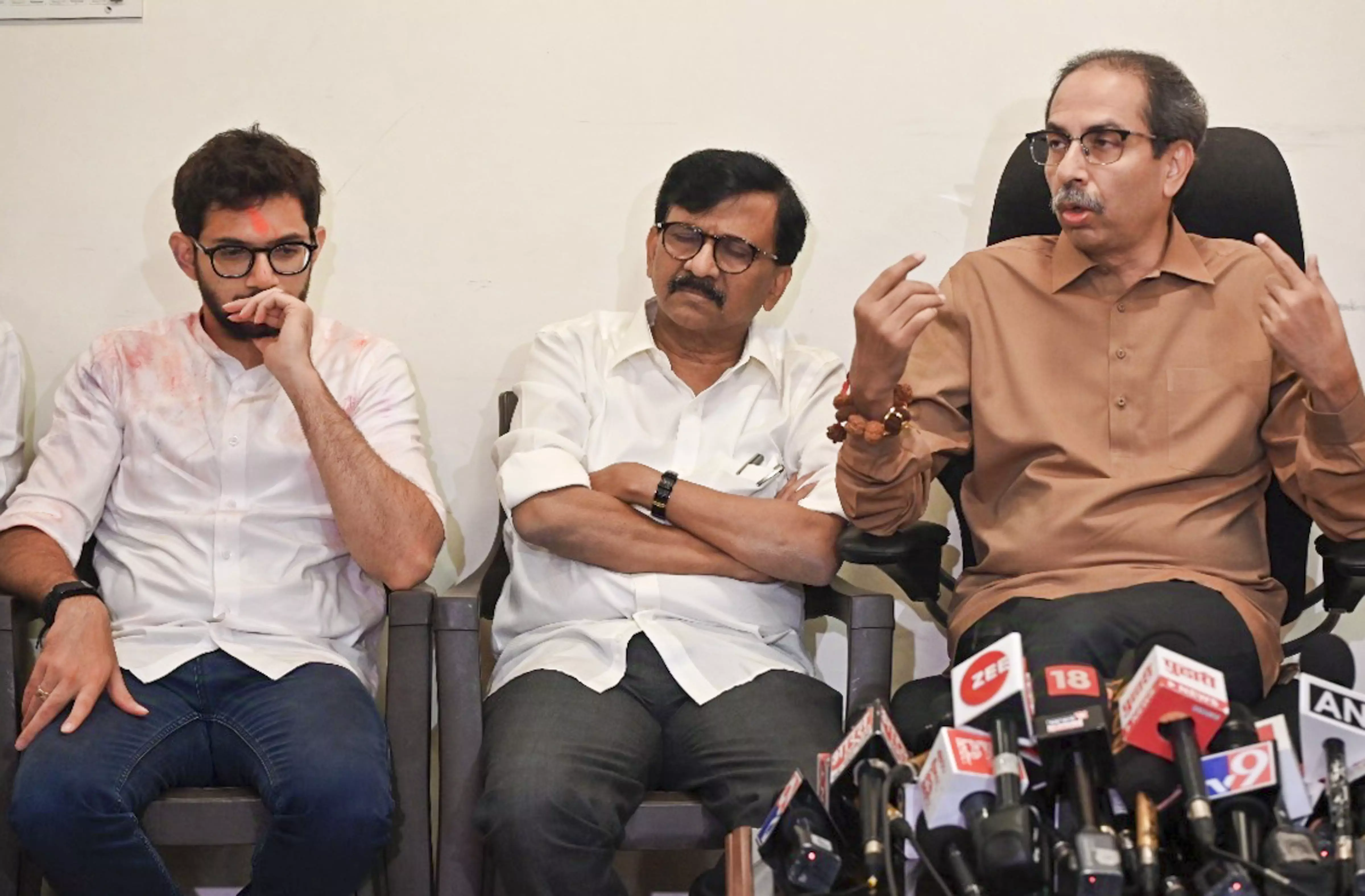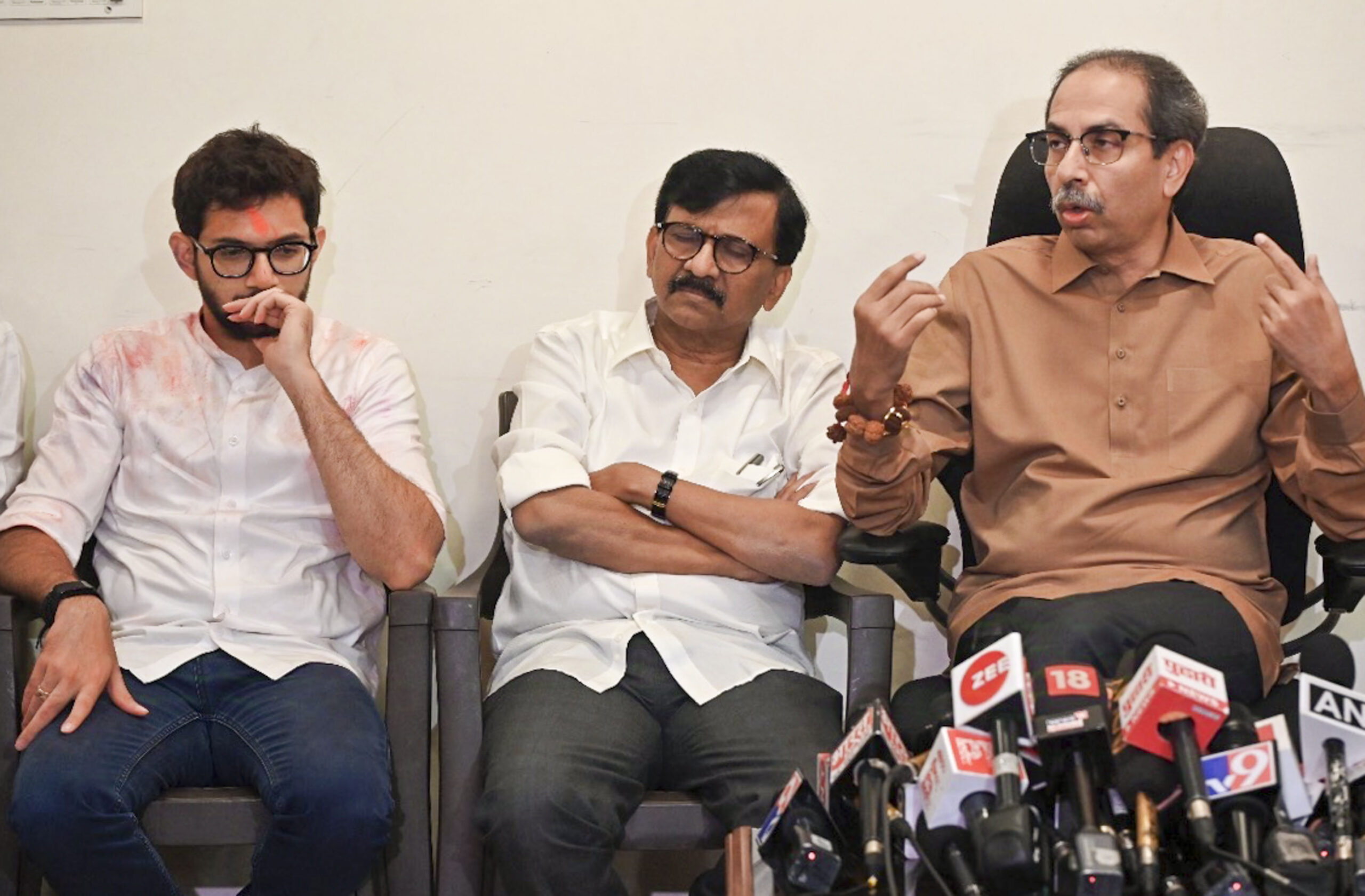
Understandably, most analysts, including this writer, scrutinise the electoral performance of winner(s), seats won, vote share — also in comparison with losers, factors that led to victory, the reasons for the “inversion” of the verdict (if so), and how the campaign was conducted. In most elections, especially with a multilateral polity which gets converted into a bipolar contest because of alliances, it is rare to come across a clearly defined contest between mutual adversaries. However, Maharashtra has, since 2023, after the vertical split in the NCP, been a political theatre with two, if not three, “paired antagonists”, neatly divided between the two adversarial alliances, Mahayuti and Maha Vikas Aghhadi (MVA). It doesn’t need much effort to list three “pairs”, officially named by the Election Commission as Shiv Sena-Shiv Sena (UBT) and NCP-NCP (Sharad Pawar), with the last one obviously being the BJP and the Congress.
Before Shiv Sena and NCP splits in 2022 and 2023 respectively, both parties were part of the MVA. But prior to 2019, the Shiv Sena was the BJP’s alliance partner for almost 35 years from 1984 onwards. Even before the BJP emerged as a party of significance in the late 1980s (except of course in the 1970s when its earlier Jan Sangh avatar was an important player in the anti-Congress space), the BJP and the Sena jointly took up the Hindu right-wing space. Bal Thackeray increasingly took up this space as the “son of the soil” was not echoing like earlier, by coming out more openly in support of the Ram Mandir agitation and the post-liberalisation celebration of Valentine’s Day, than the muted backing from the BJP prior to Lal Krishna Advani’s 1991 Rath Yatra.
The Sena, under Bal Thackeray or Uddhav Thackeray later, did not deviate from its pro-Hindutva stance. Given this, Uddhav Thackeray’s 2019 decision to part ways with the BJP was not taken on an ideological basis, it was just a shift made for pursuit of the CM’s chair.
The split in 2022 was also triggered by power-hungry Eknath Shinde, who found a keen partner in the BJP as its leadership wanted to get even with Uddhav Thackeray and seize power. The Congress, especially its national leadership, displayed discomfort over teaming up with the Shiv Sena, even after its split, but being in government remained the motivator. When the NCP split last year, Ajit Pawar had no ideological qualms in walking over from an anti-Hindutva alliance to the BJP-led coalition so long as he secured the deputy chief minister’s position and a few important ministries. It is also worth recollecting during the campaign period, Ajit Pawar as well as Sharad Pawar, had stated that in 2019, they had meetings to discuss possibilities of forming a government in partnership with the BJP. We must remember that back then, the former even crossed over to the BJP side and taken the oath as deputy CM for a few days before quitting and returning to the party led by his uncle. Governance in Maharashtra was, and has been, secured without ideological reasons, even though the primary position of the BJP remains pro-Hindutva and that of its “paired antagonist”, the Congress, is essentially anti-Hindutva.
According to the numerical hierarchy in the two alliances in terms of seats won, in the Mahayuti the sequence (or hierarchy) is: BJP (132), SHS (57) and NCP (41). According to vote-share, the sequence remains the same: BJP (26.77%), SHS (12.38%), and NCP (9.01). In the MVA, the largest to smallest party listing has got altered: SHSUBT (20), Congress (16), and NCP (10); on basis of vote-share: Congress (12.42%), NCPSP (11.28%) and SHSUBT (9.96%). The variance in numerical hierarchy within the MVA is different between the two parameters of listing and is a vagary of the first-past-the-post system. Our electoral system at times becomes more “unfair” in multi-polar contests — even when it is bipolar in terms of alliances. For instance, in the Lok Sabha polls, the total vote-share of the MVA was 44.9% (including votes polled by victorious rebel candidate from Sangli who rejoined Congress), while that of the Mahayuti was 42.73, a difference of 2.17%. The total seats differed more widely: MVA (31) and Mahayuti (17). But in the Assembly elections, the three Mahayuti parties bagged 230 parties and polled 48.16% votes while the MVA parties got 46 seats and 33.66%. Another instance of peculiarity is the vote-share in this Assembly election of the Ajit Pawar NCP faction (9.01%) while that of his uncle’s faction is more (11.28%), even though the nephew’s party won four times more seats. Likewise, Eknath Shinde’s faction may have bagged almost three times the seats, but Uddhav Thackeray’s party’s votes are just 2.42% lower. The oddity of the electoral system is that the BJP, with 26.77% votes, won almost 46% of the seats.
The stark disproportion between vote-share or actual electoral support and seat tally makes a strong case to deliberate if India should seriously debate shifting to a proportionate system of voting or not. But this matter can be taken up separately and instead we can examine various possibilities for the two factions each in the Shiv Sena and the NCP: will leaders of the four parties reunite with the other faction, or continue as separate parties or gradually head towards extinction.
Whenever the question of the political demise of any leader or party is raised, I get reminded of Narendra Modi’s words while he was a party functionary in New Delhi in late 1990s. While working on a profile of one of his colleagues who was passing through a turbulent period, I asked if this leader’s career was over. He said that there was never a “full stop” in life till it was divinely fated. Despite the bitterness with which the four parties parted ways with their colleagues, there is a far greater chance for the Pawars to come together once again, because despite winning fewer seats, Sharad Pawar’s political base appears bigger, the fewer seats are because of factors linked to which seats the two contested and their performance in them, even the ones lost. In contrast, Uddhav Thackeray will face a greater challenge, especially if Eknath Shinde remains CM and is in a position to hand out power and resources to party leaders.
Much would also depend on the BJP, particularly if it acts like a domineering party on the basis of its higher tally, as both Mr Shinde and Ajit Pawar will examine their options, although not immediately. This means that for the moment, the vanquished will fall back, but as it is colloquially said in a different context, “party abhi baaki hai”.
